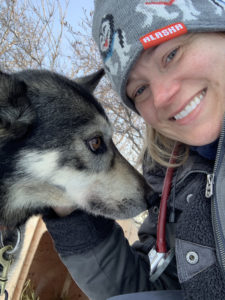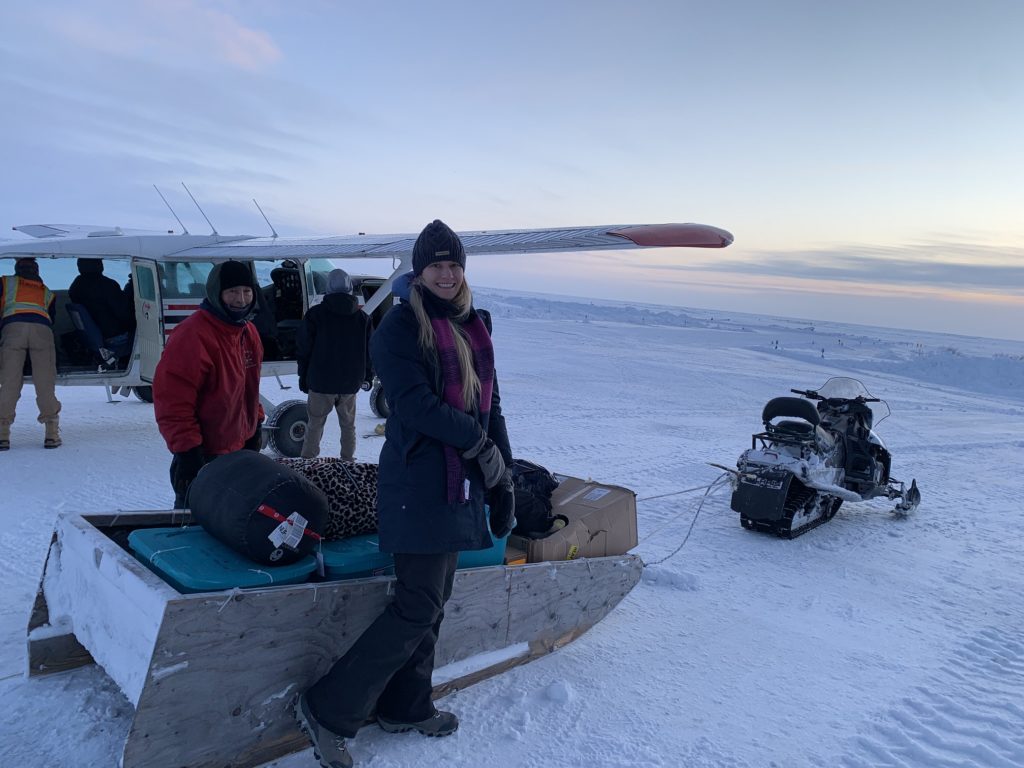By Laurie Meythaler-Mullins
In May 2020, I arrived by bush plane to Napakiak, in the southwest corner of Alaska. May in Alaska is full of energy. The sun shines, the birds are migrating, and the ice is out of the river.

The tribal council invited me into their community of 350 people after a fox entered the village and attacked a dog three times its size during the day. Rabies is enzootic in foxes here, so in the midst of the COVID-19 pandemic, now there were also concerns of rabies transmission. Most dogs in the village have never had access to veterinary care, which is typical for 58 federally recognized tribes in the 48 communities I serve.
Boardwalks are used to connect the homes where walking across the tundra can leave you ankle-deep in water. With climate change and shifting permafrost, the boardwalks have become uneven. I was walking across the boardwalks and trying not to trip when two bouncing girls, probably 8 years old, ran up to me. Their bobbed black hair framed smiling, curious faces.
I said I was a veterinarian. I showed them my veterinary box. I showed them the rabies vaccinations, the distemper and parvovirus vaccinations, the antiparasitic treatments. They had never seen an animal doctor, so they followed me as I went from home to home. They listened through my stethoscope during exams. Masked up, they watched me complete a spay surgery in my makeshift clinic.
Dog and fox encounters are not the only public health concern in this region. Reported dog bites are seven times the national average. With no access to veterinary care, dogs reproduce, and communities have to make difficult decisions on how to handle dog overpopulation. Yet, dogs have historic and cultural ties in these Yup’ik communities. Individuals and families depend on dogs, and when that relationship becomes distressing or disturbing for any reason, it can become a source of trauma.
Alaska Native communities recognize that human, animal, and environmental health are all linked, a One Health philosophy that is underscored by the COVID-19 pandemic and its animal origins. As I vaccinate dogs in this small community, I talk to the girls about veterinarians and One Health. Veterinarians protect against zoonotic disease. We follow how shifting permafrost changes wildlife patterns. We keep the animals who provide us food and fiber healthy. We take care of animals who provide us companionship and support our emotional well-being.
At the end of the day, I’m waiting for my small plane to return when I hear crunching gravel and laughter behind me. The girls run up to me and say, “We want to be like you when we grow up. We want to help the dogs.” They already under- stand that veterinarians help the animals, the people, and our environment, and they help us. Together, we are One Health.

Dr. Laurie Meythaler-Mullins provides veterinary care to remote Alaskan communities. As the lead educator for the Hub Outpost Project, Meythaler-Mullins teaches CSU and University of Alaska-Fairbanks veterinary students about One Health in rural and indigenous communities.